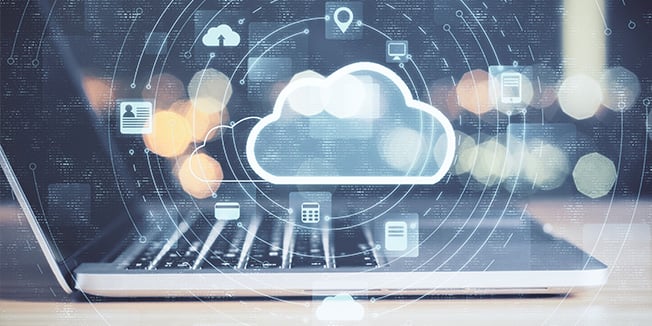
Technology continues to play an increasingly prominent role in every aspect of business. Accounting standards applicable to the costs of technology have had to adapt accordingly.
Consider a cloud computing arrangement (CCA), where a customer pays a vendor for access to software. The rise of these agreements prompted a new accounting pronouncement in 2015 that clarified circumstances under which CCAs should be treated like traditional software development costs.
Few CCAs meet the criteria necessary to be treated as software assets typically because there is no contractual right of the company to take possession of the software and the company does not have the ability to run the software on the company’s hardware. Therefore, in practice, many have been accounted for as service contracts.
However, the 2015 accounting standards change left one issue unresolved: the treatment of upfront costs in the agreement, such as costs related to implementation and setup activities. These activities presumably created some future benefit to the user of the CCA, but the accounting rules did not address how to record that benefit.
Accounting for a CCA
In 2018, the Financial Accounting Standards Board (FASB) issued ASU 2018-15, which aligns the requirements for capitalizing implementation costs in a CCA agreement with those for capitalizing implementation costs in an internal-use software license. Similar to costs for internal-use software, CCA costs related to coding and testing during the application development stage are capitalizable, while training activities and data conversion costs are expensed as incurred. The ongoing subscription fees paid for access to a CCA during the development and implementation stage should generally be expensed. Both internal and external costs are eligible for capitalization.
One of the challenges in implementing the new accounting rule for cloud software is determining the portion of fees that represent implementation costs. The CCA vendor may not readily provide the detail to show how the fees are apportioned, and it will be up to the company to estimate the portion that relates to implementation services.
Cloud Computing Accounting: Cost Considerations
Unlike capitalized costs incurred for development of internal-use software, CCA implementation costs are not considered to be an intangible software asset, but should be accounted for as a prepaid asset, similar to any prepaid subscription fees. The straight-line amortization of such costs would then be recorded in the corresponding subscription fee expense line item in the income statement.
Companies should determine whether any option periods in the CCA should be included in the amortization period, depending on the probability that those options will be exercised. Amortization begins when a module of the CCA is placed into service (i.e., ready to be used by the company). Costs should be assessed for potential impairment in a manner similar to other long-lived assets, whereby a decrease in the functionality or extent of use could trigger a loss and write-down of the capitalized costs to fair value.
Companies with significant cloud computing arrangement services also have disclosure requirements, including revealing the nature of the hosting arrangements that are service contracts along with the types of disclosures typically made for long-lived fixed assets. The cloud computing accounting standard, ASU 2018-15 is effective for private companies for fiscal years beginning after December 15, 2020, and can be adopted either prospectively or retrospectively.
Accounting in Action: Cloud Software Capitalization Example
Let’s look at an example. Company A signs a subscription agreement for a cloud-based CRM software for three (3) years at a cost of $12,000 per year. In order to configure the CRM software for its business needs, Company A incurs additional costs to configure, test, train, and import existing customer data into the new system totaling $20,000.
Company A can capitalize the portion of costs for the configuration and testing, but the remaining initial costs should be expensed. When these costs are not easily broken out, it is acceptable for Company A management to estimate these amounts. If 50% of the time was spent configuring and testing the system, $10,000 can be capitalized and then amortized over a three-year period.
This example presents a straightforward scenario of cloud computing software capitalization and expense, but it is an application that can get quite complex. If you are uncertain about cloud computing accounting guidance for your situation, contacting Matthew Dobson at MAXIS®. He can be reached directly at matthew.dobson@freedmaxick.com or 716-332-2697.